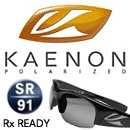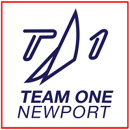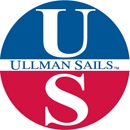
|
|
|
Scuttlebutt News: Iceboating’s Unsung Hero - A daughter's tribute to her dad by Maggie Erwin The stillness of the frozen lake breaks momentarily as the thundering boom of a stress fracture races toward the surrounding bays of Lake Michigan. The smooth black ice mirrors the sunny skies above on a balmy 20-degree day, and after multiple postponements due to poor conditions, the sailors lined up on shore are eager to get the 2007 Nite Nationals Regatta underway. The starting line is regrettably shorter than that of previous years, serving now as a testament to the willingness of the remaining sailors to press on no matter the cost or inconvenience. With no crowd behind them to cheer them on and no sponsors to help carry the burden – the men of the Nite iceboat class are fueled only by a brisk wind, their own integrity, and a deep passion for a fast sport that’s consistently under the radar.
“I bought the hull, and then I built the mast, springboard, runner-plank and the boom,” my dad responds rhythmically as he sits – legs dangling – from the edge his workbench. “The hull has an extra-long cockpit so I can fit in it,” he adds. His legs now kicking slightly as they skim the sawdust-sprinkled cement floor, breaking finally from the awkward formality he thought appropriate to convey out of respect for his daughter’s wishes for a “serious” interview. It wasn’t until now that I actually put forth an effort to see my dad as others must see him. As he answers my questions one by one, he sits upright as though some puppeteer with invisible stings were perched just above the ceiling’s wood-shelf, commanding my dad’s upper-body to lift with sense of regality all-but-forgotten since days when men still opened car doors for their dates and a candy bar was closer to a nickel than a dollar. His hands – large as a bear’s on the ends of strong, lengthy arms adequate for a man standing 6’5” – are calloused, cracked, and slightly stained from years of working sans-gloves with acetones, epoxies, and a multitude of varnishes.
However, after two second-place finishes in the DN fleet and another at the Nite Nationals for the 2007 season, one would expect Terry’s outlook to lose steam as fast as a boat pointed upwind. After all, a man who would go so far as to create an aluminum template of a mast whose design originated in the mind of an aeronautical engineer must feel he’s got something to prove. “I can sail my mast even though it’s very soft because I know what to do to keep it from breaking…the way it’s set up, the mast derotates and trims tighter and tighter on the mainsheet,” he explains, “Anyway, I should get first because my boat is really fast, but I’m really happy to get second.” With iceboats soaring around the course at upwards of 70 mph, it’s no wonder this sport is considered to be “a constant drag race” at every leg. Yet like many competitors that have come before him, Terry has faced – and dismissed – the temptation to create an illegal edge over the competition. Using carbon-fiber battens instead fiberglass or wood, using runners made from stainless-steel instead of iron, and racing with a boat that’s under the 270 lb. minimum weight limit are all ways of tipping the odds in your favor, albeit illegally.
There are a small number of things left in the world that still shine with the glow of old-world tradition and fundamental ideals. Of those precious few, hard work, hand-craftsmanship, and the sport of iceboating are undoubtedly at the top of my dad’s list. Instead of media coverage and public recognition, he’s got irrevocably chapped hands and a slew of horror stories regarding broken masts and sailors whose morning wake-up was provided á la icy-plunge through the soft spot of a frozen lake. Yet when all is said and done – when spring arrives and he’s left with nothing more than a few second-place trophies on the mantle, when the fastest boat in the fleet fails him and years of experience are not enough to grab the title – the wind never leaves my dad’s sails. |

















|




